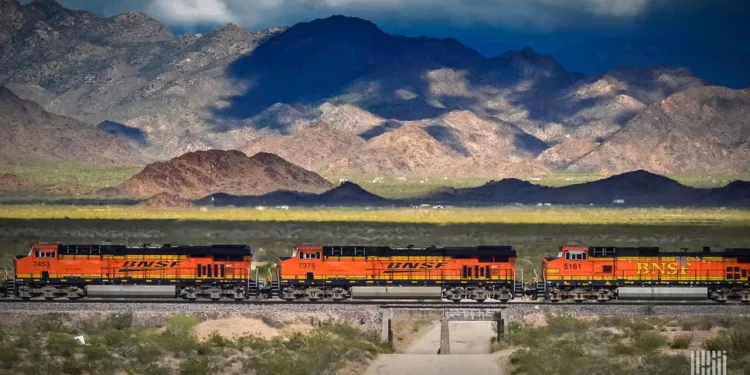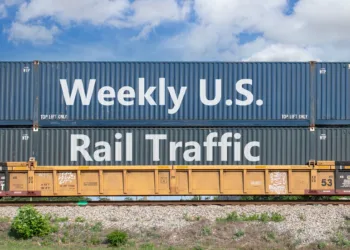According to data from the Association of American Railroads, three commodities have driven Class I railroad outperformance in 2025: intermodal containers, coal, and grains. Year-to-date, intermodal volume is up 5% compared to the same stretch in 2024; coal is up 6%, and grains are also up 6%.
Union Pacific is moving the most coal: 2025’s week 28 number was up 38% over the same week in 2024, but year-to-date, UP has moved 18% more coal carloads than the same period last year. CPKC’s year-to-date intermodal traffic numbers are up 11% over 2024, and Canadian National’s year-to-date grain volumes are up 17% compared to 2024.
Intermodal traffic, which involves the movement of containerized cargo using multiple modes of transportation without handling the cargo itself, remains a vital segment for Class I railroads. This year, the Western U.S. railroads like Union Pacific and BNSF have seen substantial increases in intermodal volumes. Data shows that Union Pacific’s intermodal volumes were up by 9% in 2025 compared to 2024, partly driven by growing consumer goods and e-commerce demand, particularly in the west coast ports that serve as entry points for Asian markets. BNSF also saw a similar uptick (5%), reflecting a strong recovery in retail and manufacturing sectors that heavily rely on intermodal services for supply chain distribution.
Eastern railroads, namely CSX and Norfolk Southern, are also tapping into the intermodal growth, though their performance varies. CSX reported a marginal increase in intermodal traffic as it continues to enhance its eastern seaboard network efficiency in response to competition from trucking. Conversely, Norfolk Southern has faced a slight downturn, attributed to competitive pressures and network adjustments to improve service reliability.
The grain market for railroads is witnessing robust activity, largely due to an increase in U.S. maize exports. Despite tensions with China leading to reduced shipments, American exporters have successfully diversified their markets in Asia, Latin America, and the Mediterranean, contributing to a 9% increase in seaborne grain shipments year-over-year. This diversification has been crucial, as Chinese tariffs imposed in March 2025 have significantly reduced their share of U.S. grain imports from 26% to 10%. Railroads play a crucial role here, with grain carloads showing a 26% rise, reflecting the increase in domestic grain movement. Kansas City Southern, now operating as part of the Canadian Pacific Kansas City network, and Canadian National are particularly benefiting from this shift, aligning their networks to maximize efficiency and capitalize on higher global demand for U.S. grains.
The coal sector is another area where railroads are witnessing significant volumes, albeit the dynamics are different. The U.S. coal market, generally in decline due to environmental policies and shifting energy preferences, is experiencing a temporary surge in 2025. This resurgence is linked to heightened domestic electricity demands and strong export demand from Asia, particularly India and China. For instance, Union Pacific and BNSF have both reported noticeable increases in coal shipments as power plants ramp up production to meet high summer electricity demands. April 2025 saw U.S. power plants receiving 28.5 million short tons of coal, up from 24.4 million the previous year, indicating a robust domestic push despite longer-term trends towards renewable energy.
International markets are providing a lifeline to U.S. coal exports, which saw their highest levels in six years. Gross exports reached 10 million short tons by June, primarily driven by competitive pricing and unyielding demand from steel production sectors in Asia. This export surge is benefiting eastern railroads as well, such as CSX and Norfolk Southern, which are seeing increased coal traffic leveraging their networks’ proximity to export terminals.
The Class Is are navigating a dynamic landscape in 2025. Their ability to adapt to shifting economic conditions, leverage intermodal capabilities, and effectively manage traditional sectors like grain and coal are underpinning their surprising outperformance.
The post Higher electricity demand boosts railroad coal carloads appeared first on FreightWaves.





















